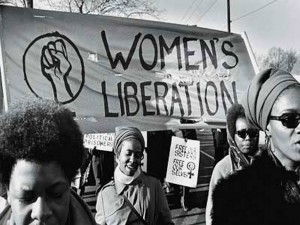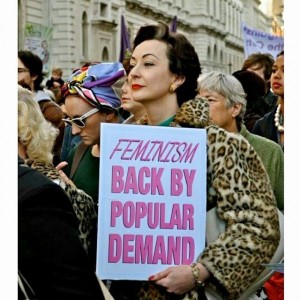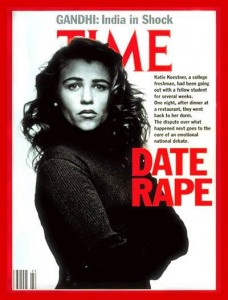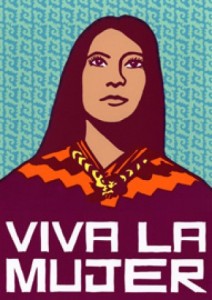Feminism, the feminist movement, the women’s liberation movement, or women’s lib are movements designed to transform models of power that facilitate the social, political, and economic sexist exploitation and oppression of women.
Feminism is not only about women being equal to men. It is also interested in challenging the prevalence of rape and domestic violence—think Bill Cosby, Emma Sulkowicz at Columbia, Mexican women at the U.S. border, or Janay Palmer.
Women’s Lib is also about the freedom to have sex, and enjoy it. It includes the belief in the uninhibited right to marry—or choose not to marry—to make choices about abortion and birth control, and to enjoy uninhibited gender expression.
 Women’s Liberation resists the kinds of dualistic thinking that insists on separating us from them: black from white, male from female, rich from poor, homosexual from heterosexual since this kind of thinking creates and perpetuates not just sexism but racism, homophobia, xenophobia, and economic exploitation. For these reasons, feminism is intersectional.
Women’s Liberation resists the kinds of dualistic thinking that insists on separating us from them: black from white, male from female, rich from poor, homosexual from heterosexual since this kind of thinking creates and perpetuates not just sexism but racism, homophobia, xenophobia, and economic exploitation. For these reasons, feminism is intersectional.
Men can be feminists. Women can be sexist. There are many kinds of feminists.
In the United States, feminism is often categorized in terms of waves. The first wave is associated with the 19th and early 20th centuries. The Seneca Falls Convention in 1848 was the first women’s rights convention in the U.S. Elizabeth Cady Stanton, Lucretia Mott, Frederick Douglass, and Sojourner Truth were there. They wanted the right to vote, and they understood that struggle for suffrage as inextricably connected to slavery and racism.
 Second Wave feminism emerged in the 1950s and 60s. More than voting and property rights, this moment in the history of Women’s Liberation focused on issues such as sex, reproductive rights, work, domestic violence, and rape as well as official and de facto inequality. Second Wave feminism helped secure important victories such as Title IX, ERA, Roe v. Wade, Women’s Studies, and The Pill.
Second Wave feminism emerged in the 1950s and 60s. More than voting and property rights, this moment in the history of Women’s Liberation focused on issues such as sex, reproductive rights, work, domestic violence, and rape as well as official and de facto inequality. Second Wave feminism helped secure important victories such as Title IX, ERA, Roe v. Wade, Women’s Studies, and The Pill.
By the late 1980s into the 90s, disagreements about pornography, racism, sexuality, and empire inaugurated what is known as Third Wave feminism. Third Wave feminism celebrated a diversity of interests beyond what has been associated with mainstream, heterosexual, middle-class white feminists.
Here, women and men understood oppression in language, representation, art, politics and cultural expectations about sex, sexuality, gender identity, class, and race. Queer, women of color, and younger feminists built on what had come before to make more specific claims and critiques of the sexist exploitation and oppression.
Jennifer Baumgardner and Amy Richards, ed. Manifesta: Young Women, feminism, and the Future (2010)
Alexandra Broadsky and Rachel Kauder Nalebuff, eds.The Feminist Utopia Project: Fifty-Seven Visions of a Wildly Better Future (2015)
Dorothy Sue Cobble, Linda Gordon, and Astrid Henry, Feminism Unfinished: A Short and Surprising History of American Women’s Movements (2015)
Estelle Freeman, No Turning Back: The History of Feminism and the future of Women (2003)
Daisy Hernandez and S. Bushra Rehman, eds. Colonize This! Young Women of Color in Today’s Feminism (2002)




One thought on “Women’s Lib (Feminism 101)”
Comments are closed.